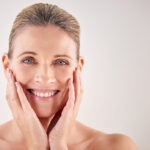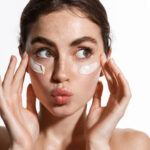As the temperatures drop and we crank up the heating, it is time to start taking much better care of our skin. Every year, the cold and dry air we encounter during the winter time, together with boosted central heating can lead to increased dryness of your skin. This cold weather and dry skin can also aggravate a number of skin conditions such as eczema, psoriasis, cracked lips and more.
Leading Dermatologist Dr Daniel Glass, from The Dermatology Clinic London on Harley Street www.thedermatologyclinic.london sheds light on the most common winter skin problems and how to combat and treat them.
Flare up of Existing Skin Conditions
It is common to find that people with pre-existing skin conditions, such as eczema may experience a flare up in the winter months, as the cold air outside and drying effects of central heating can really take their toll and dry out their skin. There is a particular form of eczema called Asteatotic eczema or winter eczema that can affect the legs, arms and hands and is more common as we get older. A characteristic ‘crazy‐paving’ pattern of this condition is observed on skin of the lower legs and the shins in particular. The mainstay of treatment for this condition is centred on the restoration of skin hydration by using a good moisturizer with petrolatum.
There is also a type of psoriasis which is slightly more commonplace during the winter, called Gutatte psoriasis, when you develop multiple wide spread, very small red scaly patches scattered like rain drops across the skin. This type of psoriasis is often linked to the development of a streptococcal sore throat, which may explain why it is more common in the winter.
Chill blains or perniosis are also more common during the winter months and tend to occur in the fingers and toes, as the cold weather constricts (narrows) the deeper blood vessels in the skin, whilst at the same time, smaller more superficial vessels in skin actually dilate (widen). This in turn produces the characteristic red /purple changes which can be painful and if severe may even blister or ulcerate. If you are susceptible to chilblains, prevention is key, so ensure you wear sufficiently warm clothing and keep your home and work environment warm.
Flaky Scalp and Skin
Seborrhoeic Dermatitis is closely related to dandruff as they are both caused by the same yeast (Malasezzia furfur) which lives on the skin. Up to half of the population have had dandruff at some point in their lives, whilst seborrhoeic dermatitis only affects up to 3% of the population. Sufferers of seborrhoeic dermatitis can experience red scaly skin on their cheeks, near their nose, in their eyebrows and also in their armpits. People with seborrhoeic dermatitis often report worsening of their rash in the winter months. For both conditions, I recommend washing with a shampoo containing selenium sulphide (Selsun) or ketoconazole (Nizoral) at least once per week in the winter months. You may also need to see your dermatologist for a suitable prescription to help improve the rash.
Dry Skin
Dry skin is one of the most common effects caused by the winter chill. As well as the cold winds causing dryness, indoor heating systems take a lot of the natural moisture from the air, which means that even when you are indoors, your skin is still unable to get away from the drying effects of winter. The best way to deal with this is regular use of a good moisturiser, which can be recommended by your dermatologist.
Chapped Lips
Many people will suffer from chapped lips at some point during the winter. These can be effectively treated by gentle exfoliation to ensure you are removing any dry flaky skin from the surface of your lips and regular moisturising with a good quality lip moisturiser.
UV Damage
Whilst UV damage is prevalent during the summer months, contrary to what many people may believe, our skin can be affected by UVA rays even during winter, especially on a clear and bright day and can penetrate the skin causing the same dangerous side effects. No matter your skin type, it is still just as important to keep your skin protected, even when you’re bundled up in warm, winter clothes, especially if you have a fairer complexion as you are at a higher risk for greater UV damage. As always, ensure you opt for a high quality, broad spectrum sunscreen with good protection which can limit potential damage if you are spending prolonged period of times in bright winter sunshine.
Acne Breakouts
During winter months, your skin is prone to become drier, especially due to central heating and cold winds. As a result, some people may over moisturise to combat this dryness. Although acne flare ups are more common in the summer months, they can occur in some people in the winter. To avoid acne flare ups, make sure you moisturise your face with an oil free non-comedogenic moisturiser. Certain chemicals which are found in cosmetics such as lanolin and petrolatum, can cause acne. So, if you suffer from an irritating dermatologic condition and are not too sure how or why, try looking at your makeup bag, or daily cleansing routine. Start looking for products labelled ‘non-comedogenic’ or ‘non-acnegenic’. If you’re not sure whether the products you are using are “acne friendly”, seek advice from your Dermatologist on what to use or avoid.
Don’t let the winter damage your skin. For more personalised information visit Dr Daniel Glass and the team at www.thedermatologyclinic.london



